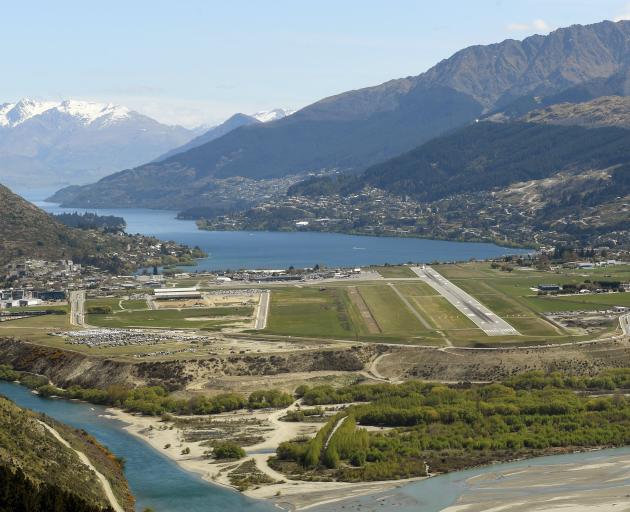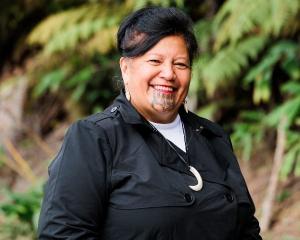
A recent Otago Daily Times editorial posed relevant questions in response to new Health Minister Shane Reti’s suggestion centralisation had gone too far and keenness for more regional and local input. The ODT asked: "where is the detail?"
Dr Reti will have resistance from the health professions as he tries to implement public input into health services. The new Health Act speaks of "locality plans" which define the service each locality should receive, providing a chance to reduce New Zealand’s appalling health post code lotteries.
About 80 localities are proposed across New Zealand. We have some experimental ones already and they vary a lot.
Former board chairman Rob Campbell expressed the view they could not be all so bespoke. Realistically many of them need to say the same thing, such as for every so many people there needs to be a GP. And if you need a liver transplant it will be done in one place — Auckland.
But the risk is that in finalising each plan public need and wishes will be trumped by the self-interest from inside the system. We need health professionals and we need health service organisations, but they can often look to their own interests first. They won’t be happy with being told what to do.
The senior doctors union has spent many years cultivating the idea that it’s "the managers" who restrict the health service when it is obvious most managers are health professionals and it’s really doctors and other health professionals who have control. You will notice the near weekly press release promoting its interest in diverting attention from pressure to change. Talking of funding is much better than changing current systems.
Next time you see some agency of health professionals’ group talk about the service, look at what they are saying.
Does their solution only rely in external support, like funding? Or does it propose some internal changes and development by them?
Then there is "consensus" and the recent "co-design" (apparently now becoming "cultural design"). Consensus serves to block progress.
In my experience it means that everybody with interests to protect, has a veto on what is decided.
Co-design has the same uses. It is important for the system to have control, and conceal any appearance of conflict.
So what happens then when the public gets some say, when there is a new voice in the planning? Will there be conflict over what is important?
Or will conflict be hidden away in the traditional ways?
Dr Reti has yet to make some announcement on detail but the Act has clear requirements.
There is to be a locality plan, and before approving that Health New Zealand (HNZ) must consult consumers and communities, affected local authorities, social sector agencies and the relevant iwi-Māori and other relevant entities.
It’s specified that HNZ must prepare a publicly available report on meeting the locality plan. That will get interesting every year as the public views what is decided should happen, and then what actually has happened.
While HNZ is responsible for finalising the plan, and providing advice, the public will have the important oversight. District councils will be very important.
Much of the secondary health service does not happen inside hospital wards any more. Lots of specialist assessment takes place in offices.
For much of the work, complex systems are not needed, professional offices, cars, computers and phones will do. So no practical barrier to set it up.
So if you lived in the Central Otago and Queenstown Lakes locality, what would you want to see in the locality plan? Access to GP services at least as easily as other parts of New Zealand? Equitable access to specialist services and reductions in the need to travel?
There remain good reasons to travel for treatment. Sometimes it will be just for a test. Your liver transplant will need to happen in Auckland Hospital.
But for many specialties the patient travel requirement and resulting poor access is because of tradition only.
You would want that in the locality plan for our 80,000 people in Central Otago and Queenstown Lakes. Or Waitaki, Clutha and Dunedin. There is no reason your ease of access should be any different from anywhere else in New Zealand. But you are going to unsettle professional positions with that idea and there will be tensions.
A prime example is of health professionals sticking with the status quo. Despite being told about the needs, they will not organise to fairly meet the genuine needs of the population.
So what is that deficiency that they won’t address?
It’s about those employed by HNZ to provide community mental health services, mobile and outpatient services, for adults and children and including alcohol and drug services.
Over 3000 people in Central Otago Queenstown Lakes have to share a single specialist worker. And only 450 people have to share each specialist worker. The postcode mismatch is outrageous. About seven to one.
So a parent in Central Otago Queenstown Lakes seeking to understand why their child is behaving in self-destructive ways is unlikely to get that service. In Dunedin gaining contact is seven times more likely to happen. The same deficiency applies to all the other situations that ordinary families face.
The solution of shifting 75 staff positions from Dunedin, increasing the staff from about 26 now to about 100 is not costly: it is a rearrangement. While that can be done over just a few years, and without human resource drama, it does unsettle systems and privileges, and it has not happened.
It is completely understandable that some worker in Dunedin, with an invested life there does not want to be told they are working in Cromwell from next month. But with people entering and leaving employment, progress can be achieved in a few short years.
Now that mental health service deficit is just one that is easy to analyse and portray. What about the people who travel to Dunedin for an appointment who find they get a five-minute session only to be told some simple test is needed but that’s next month.
If you are taking a person with health challenges from inland Otago to Dunedin, it is a 500km round trip, you might have to stay overnight, and it might cost you $500 each time.
A locality plan will change that. It’s a great means of getting such issues defined, written down, most importantly made with the public.
The inadequacy of a locality plan for Central Otago Queenstown Lakes will be obvious if it did not specify similar rates of staff in the mental health service as in Dunedin. The public will notice. The public will also notice if there are differences in access to other specialist treatments.
So if you have an interest in how the health system works for you, pay attention. The public in your area will have a say, but only if you make sure it does. The locality plan for wherever you live has great potential, but there are threats other interests could override yours.
However with luck and care, it does not have to be a contest.
- Kerry Hand worked in the health system for 40 years.












